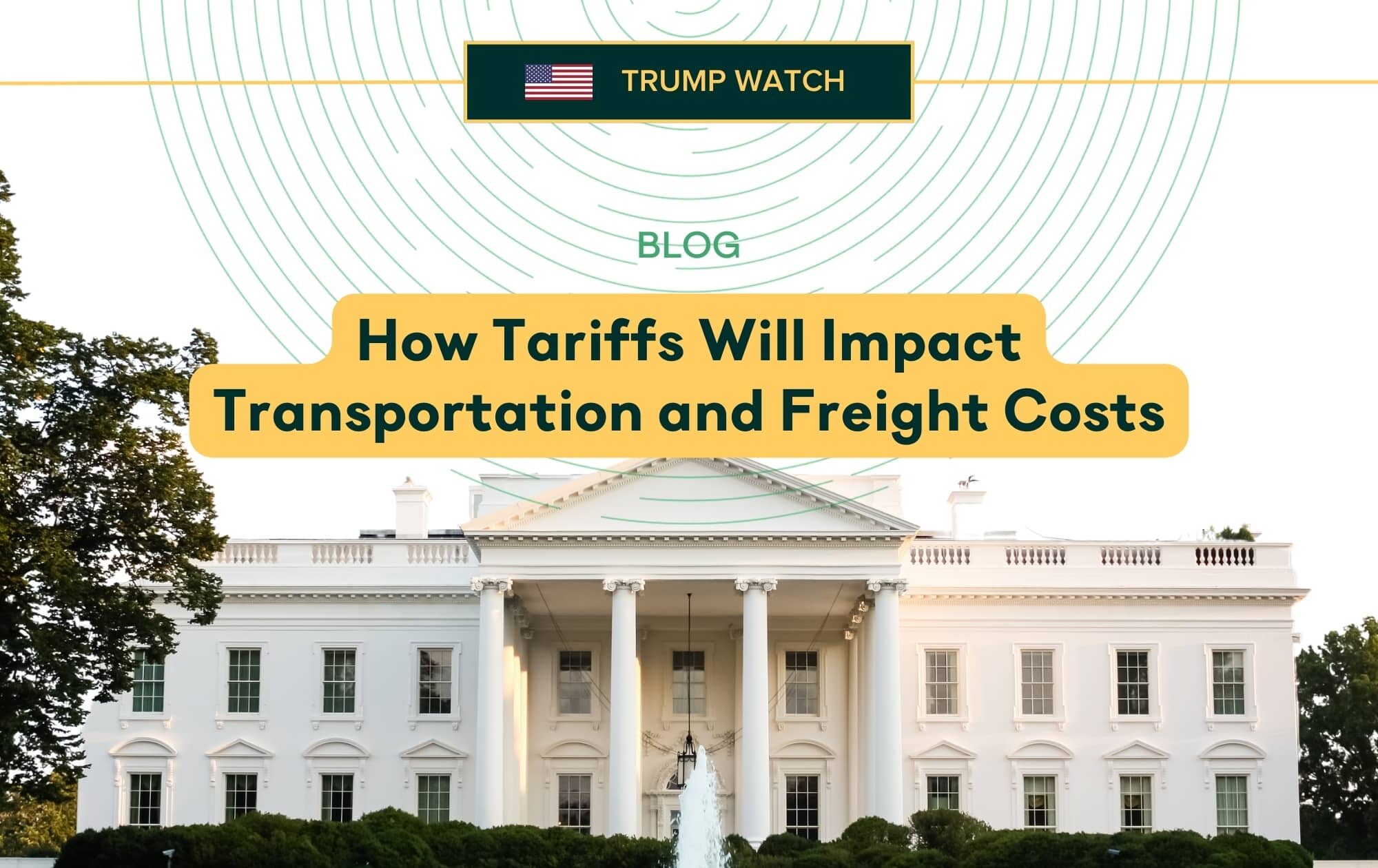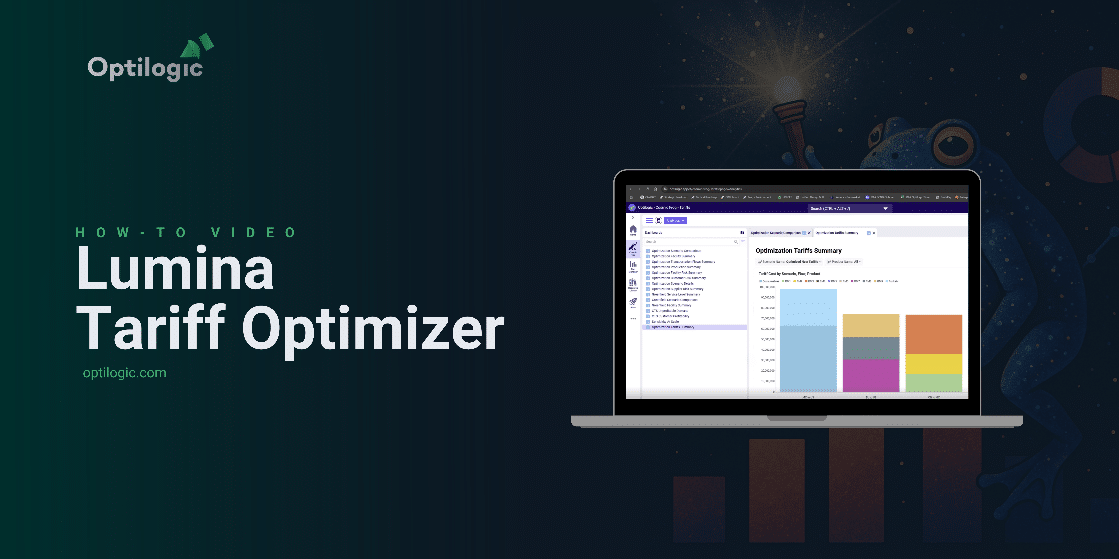
Explore how Trump’s tariff policies will impact transportation and logistics costs. Learn how businesses can adapt with supply chain strategies to mitigate the effects of tariffs.
Published by
Freeman Barber
Published on
April 29, 2025





Presidential tariff policies have always been a significant lever in shaping global trade. Under the Trump administration, tariffs took center stage, profoundly influencing supply chain dynamics. From increased freight costs to shifted transportation networks, these policies force businesses to adapt in ways that ripple through industries.
If you’re a supply chain professional or a business leader, understanding this shifting landscape isn’t just advisable; it’s necessary. This blog breaks down the pivotal ways tariffs impact transportation and freight costs while discussing strategies to mitigate challenges.
Trump’s tariff policies will have a prominent impact on supply chain transportation and freight rates. Here are some key points:
At the heart of Trump-era tariffs was the imposition of higher duties on imports from nations like China, Canada, and Mexico. A 25% tariff hike on imports from Canada and Mexico, along with an increase from 10% to 20% on Chinese goods, meant companies had to absorb additional costs or adjust their supply chain operations. Either decision led to noticeable rises in freight costs.
The reason is simple: companies reliant on international suppliers faced a direct increase in their overall logistics expenses, needing to reallocate transportation routes or source goods from more distant regions, which naturally carry higher transportation costs.
Uncertainty surrounding tariff policies has created significant market volatility, leaving businesses hesitant to commit to long-term logistics partnerships. This reliance on spot market rates, while offering flexibility, creates unpredictability in freight pricing and makes cost planning more challenging.
The economic effects of tariffs extend beyond supply chains. By contributing to inflation and trade tensions, tariffs influence industrial slowdown in relevant sectors. For freight and transportation industries, this reduction in manufacturing activity can initially stabilize costs, but as global demand fluctuates, the shipping landscape grows more unpredictable.

To overcome the challenges imposed by tariff policies, businesses must rethink and optimize their supply chain designs. Here are actionable strategies:
Tariffs inflate the cost of imported goods, but strategic supply chain design can keep these increases in check. For instance:
Building resilience into supply chain networks is no longer a luxury; it’s a necessity. Companies can:
By leveraging free trade agreements and incorporating duty minimization strategies like Foreign Trade Zones and duty drawback programs, businesses can lower tariff obligations and enhance cash flow.
Efficient logistics design reduces transportation costs by improving lead times. Companies can:
Mitigating volatility means adapting to fluctuating freight rates by:
A resilient supply chain is the backbone of any business navigating tariff-driven cost changes. Here’s why revisiting your supply chain design is a priority in this environment:
From rethinking supplier networks to ensuring compliance with complex regulations, businesses that invest in robust supply chain strategies position themselves for sustained success.
Tariffs can create challenges for your supply chain, but the right tools and strategies can help you adapt and maintain profitability. Optilogic’s Lumina Tariff Optimizer—included as part of Cosmic Frog—simplifies the process of understanding tariff impacts and developing cost-effective strategies. Learn how you can navigate shifting tariff landscapes and make smarter sourcing and transportation decisions with Lumina.
Presidential tariff policies have always been a significant lever in shaping global trade. Under the Trump administration, tariffs took center stage, profoundly influencing supply chain dynamics. From increased freight costs to shifted transportation networks, these policies force businesses to adapt in ways that ripple through industries.
If you’re a supply chain professional or a business leader, understanding this shifting landscape isn’t just advisable; it’s necessary. This blog breaks down the pivotal ways tariffs impact transportation and freight costs while discussing strategies to mitigate challenges.
Trump’s tariff policies will have a prominent impact on supply chain transportation and freight rates. Here are some key points:
At the heart of Trump-era tariffs was the imposition of higher duties on imports from nations like China, Canada, and Mexico. A 25% tariff hike on imports from Canada and Mexico, along with an increase from 10% to 20% on Chinese goods, meant companies had to absorb additional costs or adjust their supply chain operations. Either decision led to noticeable rises in freight costs.
The reason is simple: companies reliant on international suppliers faced a direct increase in their overall logistics expenses, needing to reallocate transportation routes or source goods from more distant regions, which naturally carry higher transportation costs.
Uncertainty surrounding tariff policies has created significant market volatility, leaving businesses hesitant to commit to long-term logistics partnerships. This reliance on spot market rates, while offering flexibility, creates unpredictability in freight pricing and makes cost planning more challenging.
The economic effects of tariffs extend beyond supply chains. By contributing to inflation and trade tensions, tariffs influence industrial slowdown in relevant sectors. For freight and transportation industries, this reduction in manufacturing activity can initially stabilize costs, but as global demand fluctuates, the shipping landscape grows more unpredictable.

To overcome the challenges imposed by tariff policies, businesses must rethink and optimize their supply chain designs. Here are actionable strategies:
Tariffs inflate the cost of imported goods, but strategic supply chain design can keep these increases in check. For instance:
Building resilience into supply chain networks is no longer a luxury; it’s a necessity. Companies can:
By leveraging free trade agreements and incorporating duty minimization strategies like Foreign Trade Zones and duty drawback programs, businesses can lower tariff obligations and enhance cash flow.
Efficient logistics design reduces transportation costs by improving lead times. Companies can:
Mitigating volatility means adapting to fluctuating freight rates by:
A resilient supply chain is the backbone of any business navigating tariff-driven cost changes. Here’s why revisiting your supply chain design is a priority in this environment:
From rethinking supplier networks to ensuring compliance with complex regulations, businesses that invest in robust supply chain strategies position themselves for sustained success.
Tariffs can create challenges for your supply chain, but the right tools and strategies can help you adapt and maintain profitability. Optilogic’s Lumina Tariff Optimizer—included as part of Cosmic Frog—simplifies the process of understanding tariff impacts and developing cost-effective strategies. Learn how you can navigate shifting tariff landscapes and make smarter sourcing and transportation decisions with Lumina.
Fill out the form to unlock the full content

.png)

.png)